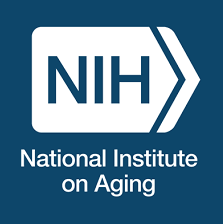The National Fund for Scientific and Technological Development, $400K

Patricia Cogram, PhD. Co-applicants: EliePoulin, PhD; Rodrigo Vasquez, PhD and Ricardo Verdugo, PhD.
Genetic and environmental impact on spatial memory
Geographic variation comprises the comparison of populations of the same species located in different environments, i.e., places expected to have experienced different levels or types of selection. How organisms adapt to the ecological environmental challenges remains poorly understood. Furthermore, intraspecific geographic variation of behaviour, and its genetic determinism, has been little explored. The large latitudinal gradient in Chile provides a rich system for exploring these questions. Here we propose a population genomic study to explore genetic bases of spatial memory using the Octodon degus as an animal model from two geographical diverse environments. The Octodon degus has served as the focus of many studies investigating memory and importantly its geographical distribution in Chile covers a big latitudinal variation in climate and habitat. Geographic variation is likely to be associated with differences the capacity of recognizing, codifying, storing, and recovering spatial information about the arrangement of items or specific routes in space. Activities like food catching and cache retrieval are dependent on cognitive mechanisms in general and spatial memory in particular. The overall goal of this project is to determine the degree of shared or divergent selection in spatial working memory across two populations, Bocatoma area and Rinconada de Maipu. We hypothesize that natural selection driving local adaptation will result in genetic changes in spatial memory in the caviomorph rodent Octodon degus. For this, we will combine a behavioural and genetic approach. Tests like spontaneous object recognition task will be apply to exploit the natural tendency of rodents to explore novel stimuli over familiar stimuli together with an extended battery of memory paradigms based on the natural preference of the animal to explore. Once characterize the difference in spatial memory performance among populations and among individuals,we will use genomic-based analyses to elucidate patterns of adaptive differentiation between populations from high altitude, desertic and mediterranean zones. Signature of positive selection will be evaluated with different methods. Using modern genomic approaches, we aim to identify genomic regions that are involved in spatial memory variation. Identified SNPs will be mapped on the existing annotated genome of O. degus to determine potential candidate genes involved in the evolution of spatial memory. In doing so, we aim to understand the underlying population genetic processes that are behind the difference in ecological performance, trying to unravel the adaptive dimension of spatial memory.
RFA-AG-21-003 grant from the National Institute on Aging / NIH. 5-year, $5M NIH grant to study.

Comparative Single cell Epigenomic Analysis of AD-Like Pathogenesis in Unconventional Animal Models
Alzheimer’s disease (AD) is the most common cause of progressive dementia in older adults. Presently, more than 5.5 million Americans may have dementia caused by AD. There is no cure for this debilitating condition. Per RFA-AG-21-003, it is important to expand and complement mouse model efforts by developing, characterizing, and validating suitable new or unconventional mammalian, non-murine models of AD to accelerate the discovery and development of new therapies.
Our goal is to use single-cell epigenomics technologies developed by our team to create cell-type-specific transcriptome and epigenome maps in frontal cortex and hippocampus associated with AD-like pathogenesis using two naturally occurring AD animal models: Octodon degus. The proposed research will allow us to develop a comparative analysis to determine conserved epigenetic alterations in the unconventional animal models and bridge our existing databases of mouse models and humans.
Specific Aim 1. Create single-cell atlases of chromatin accessibility and gene expression in the prefrontal cortex and hippocampus of the degu correlated to AD-like neuropathology and behavioral impairment
Specific Aim 2. Map chromatin organization and DNA methylation with a focus on disease-associated cell types in the prefrontal cortex and hippocampus of the degu.
Specific Aim 3. Integrate molecular omics maps, neuropathological maps and cognitive behavioral measures to identify molecular targets and cellular vulnerability along with the marker genes and regulatory pathways in AD pathogenesis.



